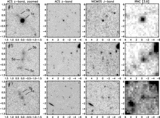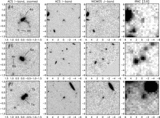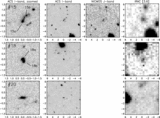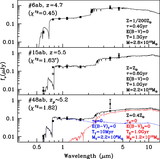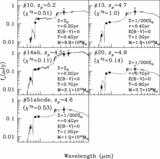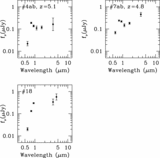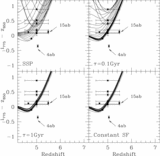Image Details
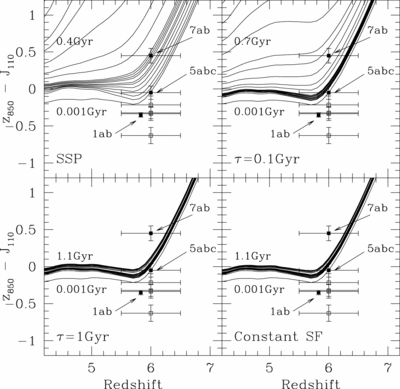
Caption: Fig. 4.
Most of the HUDF ﹩z\approx 6﹩ objects that have NICMOS photometry show unusually blue ﹩( z_{850}-J_{110}) ﹩ colors (Yan & Windhorst 2004b). The three that have IRAC identifications are shown here by filled squares, while the remaining ones are shown by open squares. The one without a horizontal error bar is object 1ab, which has a known redshift of 5.83. The others (including 5abc; see explanation in § 3.4) are put at ﹩z=6﹩ with error bars indicating their possible redshift range of ﹩5.5\lesssim z\lesssim 6.5﹩. The BC03 models are used to calculate expected colors at different redshifts and ages. Four types of SFH are considered and are shown separately as the "isochrones" in each of the four panels: an instantaneous burst (SSP), continuous but declining star formation with e‐folding timescales of ﹩\tau =0.1﹩ and 1 Gyr, and a constant star formation. The ages of the models are 0.001 Gyr, 0.01–0.09 Gyr (0.01 Gyr step size), and 0.1–1.1 Gyr (0.1 Gyr step size).
Copyright and Terms & Conditions
© 2005. The American Astronomical Society. All rights reserved. Printed in U.S.A.


